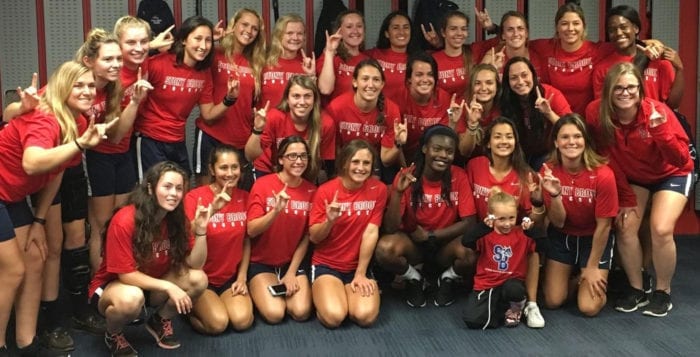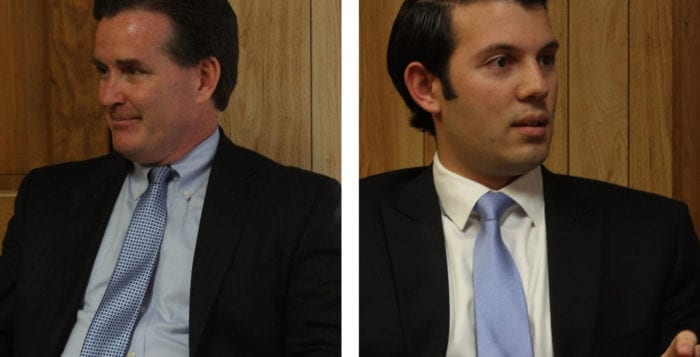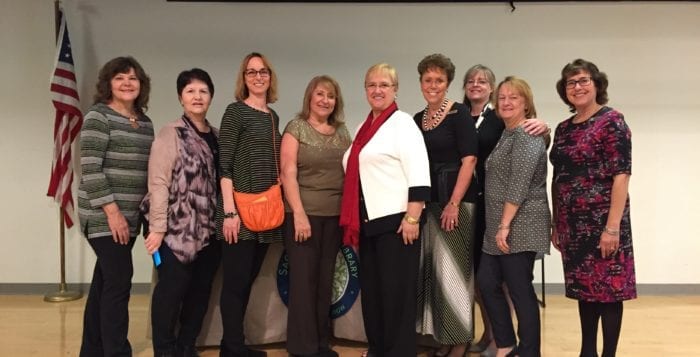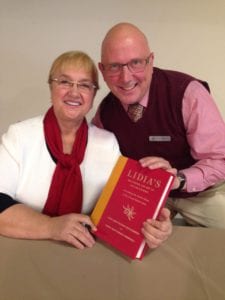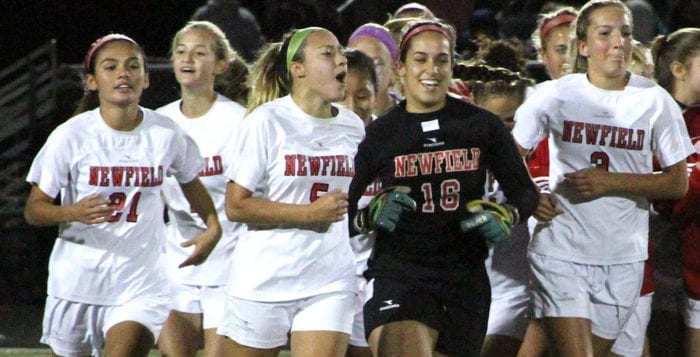Kevin Redding
On July 4, 1939, New York Yankees legend Lou Gehrig stood before 60,000 fans at Yankee Stadium and confirmed his diagnosis of amyotrophic lateral sclerosis and closed his statements by saying: “I might have had a tough break — but I have an awful lot to live for.”
This sort of display of courage and determination in the face of great affliction is now being echoed by a 4-year-old girl named Rylie Laber, a student at Middle Country’s Bicycle Path Pre-K/Kindergarten Center, who loves to play soccer and takes great joy in learning new things in the classroom.
Those who know her best describe her as energetic, loving, happy, competitive and sassy, with a great laugh. Her spirited personality serves as the ultimate remedy for the rare genetic disorder she’s suffered from since she was 6 months old.

Called Shwachman Diamond Syndrome, the disorder causes bone marrow failure, pancreatic insufficiency, malabsorption of food and vitamins, and growth difficulties. For most of her life, Rylie’s day-to-day schedule has consisted of countless doctor and hospital appointments, infections, taking medications with every meal, bruising easily, mouth sores, and a lot of dehydration due to fevers. Even two hours of mindless fun at Chuck-E-Cheese when she was only 2 years old led to a miserable three months of being sick with a chronic cold and fever.
But since late August, when she was taken under the wing of SUNY Stony Brook’s women’s soccer team through the Team Impact program, she’s turned over a new leaf and has something to consistently look forward to. In turn, her involvement as an honorary team member has made life better for her family, and the team itself has been impacted greatly by her fun-loving presence.
Rylie’s grandmother Mary Balint, who has full custody, which she shares with Rylie’s father, said that even with her illnesses, Rylie’s always been very cheerful and happy, and that’s only increased tenfold since joining the team.
“She is pushing forward and she absolutely loves her team,” Balint said. “Just last month she had asthmatic bronchitis and every day she was like ‘I’m not letting this stop me. I’m going to practice. I’m going to be with my team, I’m going to do what I have to do,’ so she’s definitely fighting through whatever she needs to fight through to stay with this. She’ll do anything for them. It’s just made her so much stronger.”
Because of how rare Rylie’s illness is, every other year she and Balint journey to Camp Sunshine — which provides retreat and support for kids with life-threatening illnesses and their families in Maine — for a medical conference. This is where Balint first heard about Team Impact, the organization that drafts kids to become members of local college athletic teams.
Initially, as Balint was looking into the program and submitting Rylie’s application, she was told that they generally didn’t start kids until they were 5, but that was until they learned that she had a special interest in soccer — which she’d been playing since she was 3.

That’s when the organization touched base with Brendan Faherty, Stony Brook’s new head coach of the women’s soccer team, who, along with the student athletes, took to her immediately. Rylie joins the Seawolves in the weight room, goes to practice and games, stretches with them on the sidelines, and kicks the ball. As Balint says, everything they do, she does. According to Faherty, it didn’t take long for Rylie to be herself among her new friends and teammates.
“In the beginning, she was a little bit shy,” he said, “but that lasted about five minutes. She’s super outgoing. She just wants to talk to everybody — goes from one player to the next — and she’s got a great attitude, and really cares about everybody in the program. … We try to spend as much time as we can with her. We went to one of her soccer games and she’s actually really good. She’s super aggressive on the field and she scores a lot of goals and just seems to really love soccer.”
In terms of Rylie’s impact on the students on the team, Stony Brook senior and teammate Lindsay Hutchinson said that Rylie was with them for almost the entire season, and every day the Seawolves spent with her was guaranteed to be a good day. The Stony Brook team even improved upon its record this season with Rylie by their side.
“She just kind of puts everybody in a good mood,” Hutchinson said. “Personally, it gives me a greater appreciation of life, because Rylie just walks around like the happiest child in the world, even though she has a lot of things going on — probably more than we realize. She clung to us right away. Every time she comes to see us, whether it’s at practice or a game, she’ll run right out on the field and give us all hugs.”
For Balint, it was always important that Rylie be kept in the loop as to what was happening with her medically, rather than try to mask it, and said that she knows a lot more about her illness than a 4 year old should. At school, she stays on top of all the medication she needs to take and makes sure that she’s using her own crayon box, to avoid coming in contact with others’ germs, and even a small cold could wipe her out for three weeks straight. Being on the team is Rylie’s incentive to keep herself in tip-top shape, especially since she’s going to be part of the team again next year.
“Sometimes, I sort of use it as a bargaining chip,” Balint said. “If she won’t do something that she has to do, I’ll say to her ‘you think your team would like that?’”
In fact, the team has such an effect on her that she’s even developed a variety of superstitions once it’s game time.
“She has to wear the strings out of her shorts,” Balint said, “and she’s gotta wear her red jersey to school and white jersey to the game. Right before every single game, she runs to the coach with a package of Scooby Doo fruit snacks and he has to eat them. It’s been her little superstitious tradition now.”

